Christendom barged, often violently through piracy and raids, into Mediterranean trade routes in the 11th century. During this period, licenses, governments, and sovereigns limited Mediterranean trade in written word, often along religious lines. These limitations were crystallized as the crusades broke out. Nevertheless, in the centuries during and following the crusades, trade flourished despite limitations on interreligious trade.
Imposters During a Commercial Revolution: 1150-1350
A period of economic reorganization in the Mediterranean lasted from the mid-12th century until the floods, famine, cold, and eventual breakout of the Black Death leading up to 1350. During this time, authorities created laws regarding identity, fraud, and contraband. However, the deeds of traders across the sea more often followed a more implicit rule: when you engage in fraudulence, just do us all a favor and don’t get caught in the act. The merchants committing crimes of fraudulence had to be proficient in the art of evasion, circumventing authority for their own gain. To do this, their concepts of identity had to become more fluid. For example, a large percentage of traders in Genoa were Jewish. Therefore, because geography and religion were very intertwined, a trader claiming to be from Genoa could be easily perceived as Jewish.1
Another way people pulled off identity fraud was by using sumptuary laws, laws and customs of various lands which required certain dress for certain religions. One could easily “dress up” as a member of a given religion would. Therefore, these laws were instead often used in fraudulence. “People only pretended to be Jewish, Christian, or Muslim,” says Dr. Hussein Fancy, author of The Mercenary Mediterranean and the upcoming book The Impostor Sea: The Making of the Medieval Mediterranean.1 But his bold if not hyperbolic argument depends on the convoluted workings of identity, authority, and illicit traffic in the medieval Mediterranean. Of course, the dangers of dissembling one’s identity so flippantly included the ever-present possibility of being accused of deception, and one could also easily go too far while playing dress up. Since many sumptuary laws were ignored, following them too closely could reveal one’s falsehood. The trick was not to look like you were trying too hard lest someone accuse you of deception. The line was thin, permeable, and ever-shifting.
Dr. Fancy argues that the very fact that merchants could assume a different religious identity suggests the unstable nature of religious categories. Religion did not sit apart from but was tied up in law and trade. The presence of impostors presumes that religious differences were simultaneously legible enough to be forged and flexible enough that many merchants felt few qualms about their deceptions and could easily pull off cons.
Women & Slavery
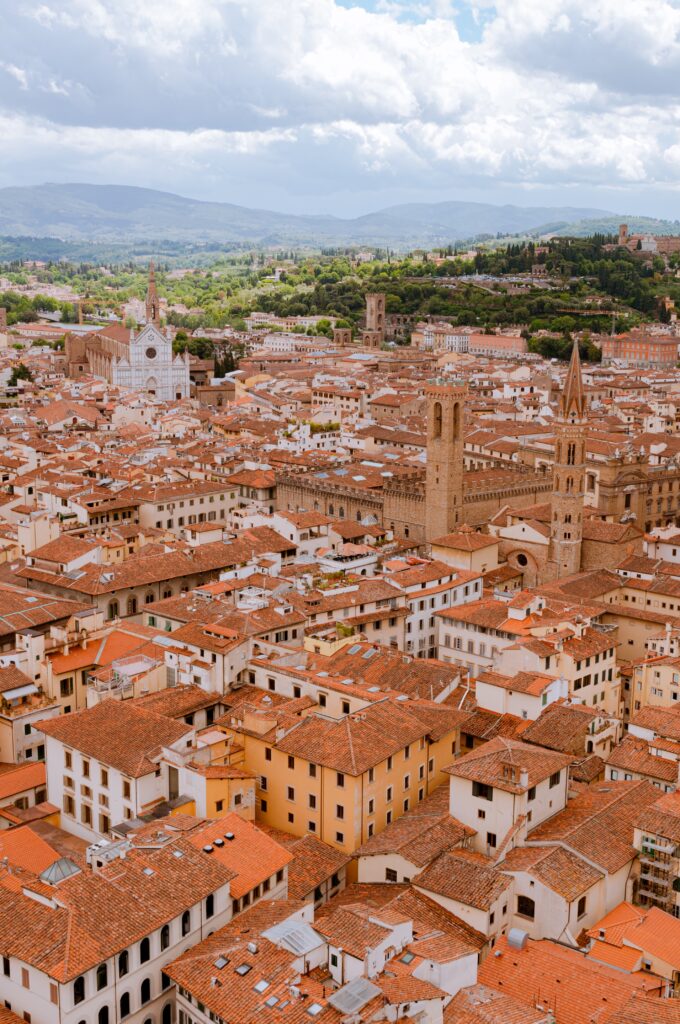
But why did traders commit identity fraud, especially religious identity fraud? One motivation was the common religious restriction that Christianity, Islam, and Judaism all shared: traders could not sell coreligionists. However, “slave traders did not inquire too closely into the religious identities of the enslaved men and women they purchased,” explain O’Connell and Dursteler in their comprehensive The Mediterranean World: From the Fall of Rome to the Rise of Napoleon.2 In order to get around laws restricting the selling of slaves of particular religious backgrounds merchants would pass themselves and/or enslaved people off as an adherent of whatever religion let the transaction be legal. “People were faking it all the time,” explains Dr. Fancy, and records tell of innumerable counterfeiters.1
While some women engaged in trade and fraud alongside men, the harsh reality is that the main role women had in trade at this time was as slaves. One source condemns a certain Romeo di Lapo of Florence who was caught selling coreligionists. He “cajoled” them, “[k]nowing that they were free and Christian women” and “depriving them of their liberty.”3 He even forged documents that claimed the women were “heretics and unbaptized” so he could sell them to a Christian Florentine.3 If this was the fate of coreligionists, those whose religion differed from the slave traders’ fared even worse and were more easily captured and sold for a gross profit.
This fraudulent practice is the centerpiece of a Mediterranean folk tale, cited by Dr. Fancy. A woman is sold as a Christian to a Muslim. When she reveals herself to be Muslim, she demands that he sell her off again as a Christian and split the profit with her. This story is just one example of how these kinds of frauds challenged boundaries. But the ugly truth of the matter was that the slave trade consisted often of young girls without the power to negotiate.
Widespread Fraudulence: Merchants, Clerks, & Kings
During the commercial boom that motivated such fraudulence, the crusades continued to wage on, primarily between Christian and Muslim groups. Papal bans limited in law much of Christian Mediterranean trade along religious lines. In response, merchants raised questions on what exactly constituted illicit trade. One such complaint in the early 13th century arose from Venice, a hub for weapons smugglers and licit traders alike. The trading bans had injured their economy, so they reached out to Pope Innocent III to ask for an exemption. His response was probably not what they were hoping for.
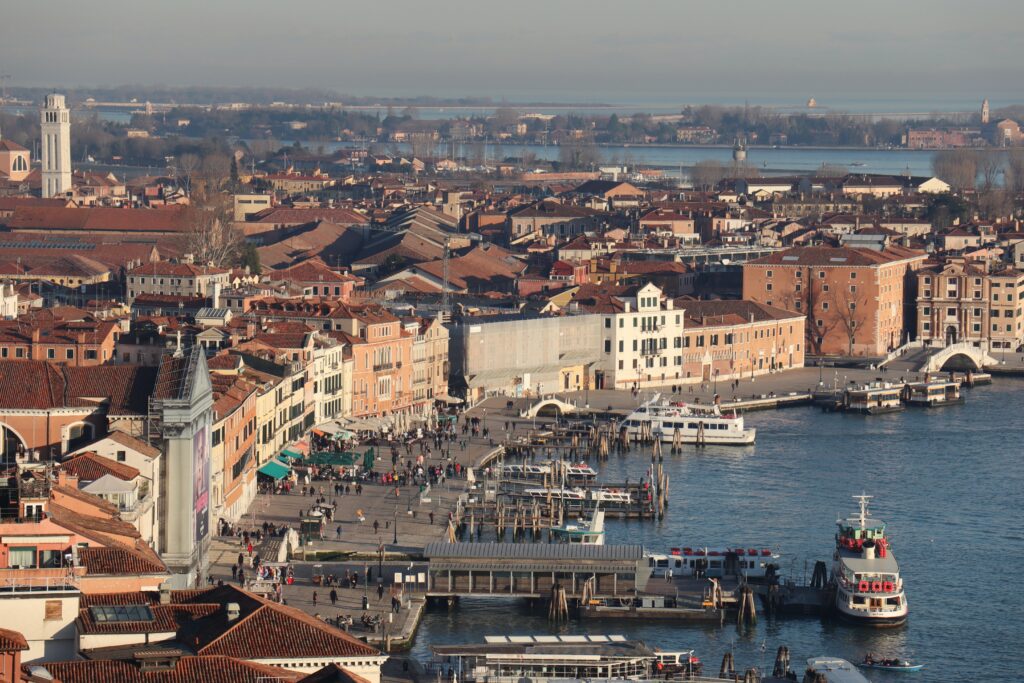
“In support of the eastern province [that is, the crusading states]… we have renewed the decree of the Lateran council, which excommunicated those Christians who shall furnish the Saracens with weapons, iron, or timbers for their galleys,” the pope declares in one source.4 He implies that trading in such items would be a betrayal against Christendom itself. He even continues in the letter to ban “anything to do with the Saracens either directly or indirectly,” especially trading in “iron, flax, pitch, sharp instruments, rope, weapons, galleys, ships, and timbers.” But he does allow a small concession: the Venetians may trade in certain non-military merchandise “whenever it shall be necessary,” so long as they vow to aid the crusader states when they are called upon.
But how effective was this law, and was it ever as absolute as it sounds on paper? An important series of documents known as smugglers’ confessions provide some clarity on this issue.
According to Dr. Fancy’s research, smugglers of illicit merchandise and other impostors could plead for a certificate of absolution from the papacy.1 These records show that individual merchants, entire families, clerics and, astonishingly, kings received certificates of absolution, and some more than once. The reality of repeat offenders returns us to the question of the law’s degree of intended efficacy. Did they confess only out of secular self-interest? Records of anonymous merchants imply that some confessed for no objective purpose, only moved by their conscience. It must be taken into account, however, that even these smugglers’ confessions are far from perfectly reliable. Clerks were known to counterfeit records, bringing to light an important aspect of Dr. Fancy’s argument: no one was above fraud, not even those who served the law. Due to this, the documents and sources that historians have access to today must be considered with a grain of salt large enough to purchase a medieval kingdom.
Crusades & Conquest: Holy Movements With Monetary Motivations
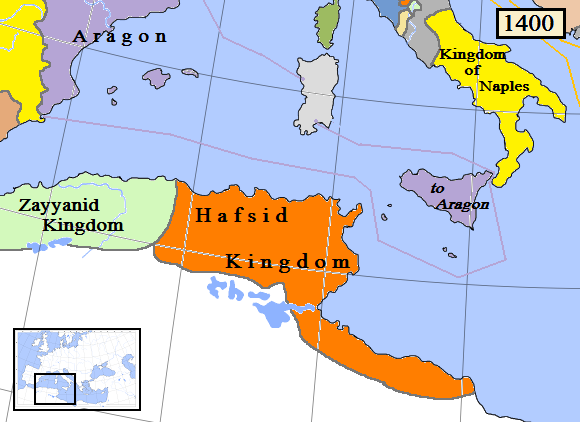
Everyone from humble traders to royal leaders committed fraud for monetary gain, and this habit was not limited to individual actions—sometimes entire movements became fraudulent. In such a manner, at times, the line between crusading efforts and mercantile interests blurred.
The idea of a “crusade” had been since its conception difficult to define and full of fraudulent activity, almost to the point that crusading could be called an impostor itself. Therefore, when Pope Clement V formed a Christian and Muslim joint “crusade” against Granada in 1308 he was hardly redefining crusading so much as leaning into the indefinable concept of what a crusade could conceivably look like. During this complex crusade, the Crown of Aragon eventually took the port of Almeria near Granada on the southwestern coast of the Iberian Peninsula.2
The Iberian Peninsula itself was no stranger to shifting rule, and its trade continued on with vigor, as did smuggling, despite the crusades. Port custodians could order inquisitions for suspected contraband. Such accusations sometimes lead to violence by smugglers as they resisted. Several documents implied that these impostors’ “failure to fake it,” as Dr. Fancy puts it, is what doomed them.1 They were expected to pull off their con with a series of good lies in order to avoid detection.
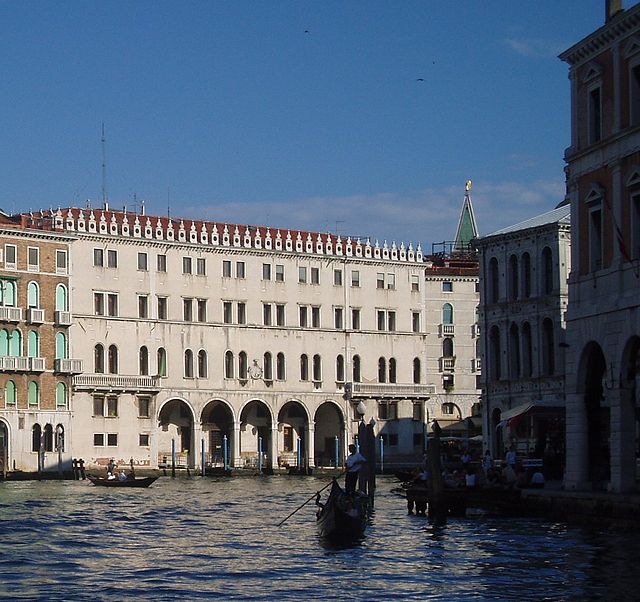
From Iberia, the Crown of Aragon set its sights on North Africa. The Hafsids had taken control of northwest Africa from the Almohads in the mid-13th century, continuing their tradition of welcoming foreign merchants.2 Eventually, once the Crown had spread into the weakening Hafsid Kingdom, Aragon ruled from Tunis through Hafsid puppet rulers. “They invoked the memory of the Almohad caliphs to justify their authority in North Africa,” explains Dr. Fancy.5 This legitimizing technique is often used by conquerors, allowing them to engage in a kind of fraud by claiming a legacy that is not theirs to claim.
“Tunis remained central to the Crown of Aragon’s unfolding ambitions in the Mediterranean,” explains Dr. Fancy.5 And its trade was an integral part of that. Take, for example, its funduk.
Funduk means “hotel” in modern Arabic, but its roots stretch back to the classical Greek word pandocheion, a hostel, as does the Italian fondaco.6 Funduks were heavily fortified medieval trading compounds and merchant hostels, usually walled off and build like a fortress to protect the merchandise inside. They also functioned as embassies, with priests and doctors. For example, many contained a mosque for prayer, even in distant western lands where funduks were more rare. At these trading locations, religious impostors could commit identity fraud to avoid heavy port duties, and religious identity was particularly fluid despite, or perhaps due to, an increase in religious segregation.
Contesting a History of Division
The study of these merchant hostels, especially during the crusades, offers an example of shared heritage in the Mediterranean in contrast to a long historiography of division. “As the institution shifted from one realm of political, religious, and linguistic dominance to another… it was both a point of common understanding across cultures and mediation between them,” explains Olivia Remie Constable in her book about trading hostels, Housing the Stranger in the Mediterranean World.6 These hostels are proof of continued trade, connections, and a certain cross-Mediterranean culture during a period of identity anxieties.
Like Constable, Dr. Fancy argues that past Mediterranean historiography has often been too focused on binary conflict. For example, French historian Fernand Braudel took a broad stance of connectivity while the earlier Belgian historian Henri Pirenne believed in the importance of strict boundaries and the divisions they produced. But Dr. Fancy claims that both wrongly assume an automatic conflict between trade and religion. He suggests instead that trade and religion were treated in tandem in the middle ages because both relied on how individuals presented their identities. The boundaries between Muslim, Christian, Jewish, and other religious communities were often crossed.
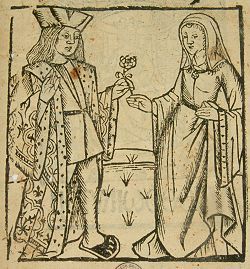
Identity in the Mediterranean had already been in flux for centuries if not longer by the time the crusades began. The 12th century poem The Romance of Floire and Blanchefleur is just one literary example of this. The poem was written down during the commercial revolution of the mid-12th to the mid-14th centuries. The crusades had been intensifying the West’s cross-cultural interactions with the rest of the world, so anxieties about identities and opportunities for identity fraud were exacerbated, which the literature of the time proves. In the aforementioned poem, the lover Floire converts to Christianity from paganism to be with his beloved Blanchefleur. But while Floire’s conversion may have been true, his attempts at disguise were less successful—not everyone is built for fraud. When Floire travels across the sea disguised as a merchant to rescue Blanchefleur, his noble nature reveals itself in his sighs of love and beautiful physical features. The author of the poem, which had been told for decades before it was written down, plays with this tension between true and false identities, questioning the amount to which fraudulence can really function and what it means to truly change one’s identity.
Of course, fluid identities does not mean that religion held no meaning. Indeed, a perspective that assumes merchants, each perhaps occupying one of three religious “worlds,” would set aside their beliefs for materialism actually reduces the importance of the religious contact that occurred. Truly, the sea was a soup of different approaches. Historians such as Dr. Fancy continue to research religious “impostors,” but the frauds and deceptions of these “criminal merchants” were certainly central in the medieval Mediterranean.
Conclusions: Authority in a Fraudulent Sea
The commercial boom before the outbreak of the Black Death flourished despite, or perhaps in part due to, the violence and connectivity of the crusades. In such an environment, the law and its authorities—even kings and clergy—had to be unafraid to embrace fraudulence. Money is a powerful motivator; rarely can religion or government prevent lucrative trade. With the backing of rulers, the “continual shell game” of smuggling and fraudulence in the medieval Mediterranean increasingly blurred the line between falsehood and truth.1 Power came from controlling and including, not preventing, the illicit. The law itself, redefining and controlling all, had transformed into an impostor.
1 Fancy, Hussein. “The Impostor Sea: The Making of the Medieval Mediterranean.” 2022-23 Center for Medieval and Renaissance Studies lecture series, The Ohio State University, 9 September 2022, Colloquium Space, 18th Avenue Library, Columbus, OH. Lecture.
2 O’Connell, Monique, Eric R. Dursteler. The Mediterranean World: From the Fall of Rome to the Rise of Napoleon. Johns Hopkins University Press, 2016.
3 Brucker, Gene. The Society of Renaissance Florence: A Documentary Study. Harper and Row, 1971.
4 Rodriguez, Jarbel. Muslim and Christian Contact in the Middle Ages. University of Toronto Press, 2015.
5 Fancy, Hussein. The Mercenary Mediterranean: Sovereignty, Religion, and Violence in the Medieval Crown of Aragon. The University of Chicago, 2016.
6 Constable, Olivia Remie. Housing the Stranger in the Mediterranean World: Lodging, Trade, and Travel in Late Antiquity and the Middle Ages. Cambridge University Press, 2003.
Cover Photo uploaded by Matthew Paris, https://commons.wikimedia.org/wiki/File:KingHenryIII%26QueenEleanor_ReturnFromGascony_MatthewParis_ChronicaMajora.png.
a Photo by Drew Dempsey on Unsplash
bPhoto by Yiheng Du on Unsplash
c “Fondaco dei tedeschi 234” uploaded by Abxbay, https://commons.wikimedia.org/wiki/File:Fondaco_dei_tedeschi_234.jpg.
d “Hafsid1400,” uploaded by Gabagool. Licensed under the Creative Commons Attribution 3.0 Unported license. https://en.wikipedia.org/wiki/File:Hafsid1400.png.
e“Floris ende Blancefloer Lg 68,” https://commons.wikimedia.org/wiki/File:Floris_ende_Blancefloer_Lg_68.jpg.